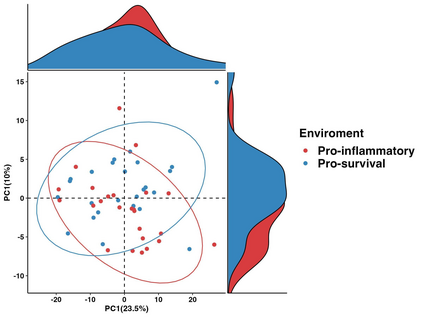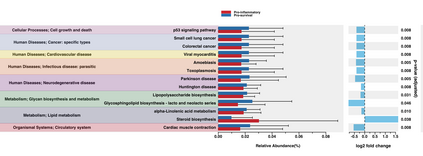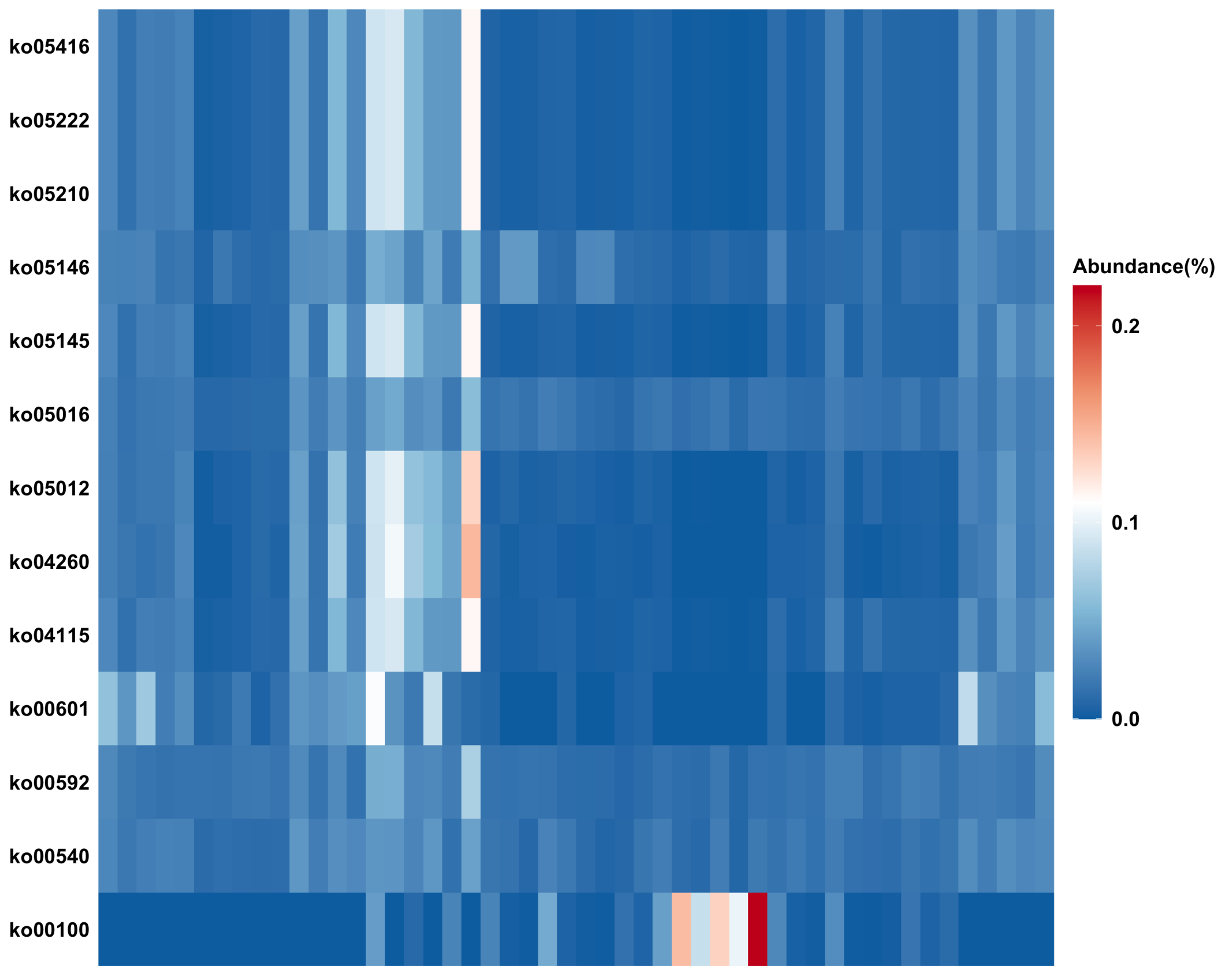Microbiome research is now moving beyond the compositional analysis of microbial taxa in a sample. Increasing evidence from large human microbiome studies suggests that functional consequences of changes in the intestinal microbiome may provide more power for studying their impact on inflammation and immune responses. Although 16S rRNA analysis is one of the most popular and a cost-effective method to profile the microbial compositions, marker-gene sequencing cannot provide direct information about the functional genes that are present in the genomes of community members. Bioinformatic tools have been developed to predict microbiome function with 16S rRNA gene data. Among them, PICRUSt2 has become one of the most popular functional profile prediction tools, which generates community-wide pathway abundances. However, no state-of-art inference tools are available to test the differences in pathway abundances between comparison groups. We have developed ggpicrust2, an R package, to do extensive differential abundance(DA) analyses and provide publishable visualization to highlight the signals.
翻译:微生物组研究现在已经超越了对样本中微生物分类的组成分析。来自大型人类微生物组研究的越来越多的证据表明,肠道微生物组变化的功能后果可能提供更多研究它们对炎症和免疫反应影响的力量。虽然16S rRNA分析是最受欢迎和经济实惠的微生物组成分析方法之一,但标记基因测序无法提供有关社区成员基因组中存在的功能基因的直接信息。已经开发了生物信息工具以使用16S rRNA基因数据预测微生物功能。其中,PICRUSt2已成为最流行的功能分析工具之一,它生成社区级通路丰度。然而,目前还没有可用于测试比较组之间通路丰度差异的最先进推断工具。我们开发了ggpicrust2,一个R软件包,进行广泛的差异丰度分析,并提供发布可视化以突出信号。






